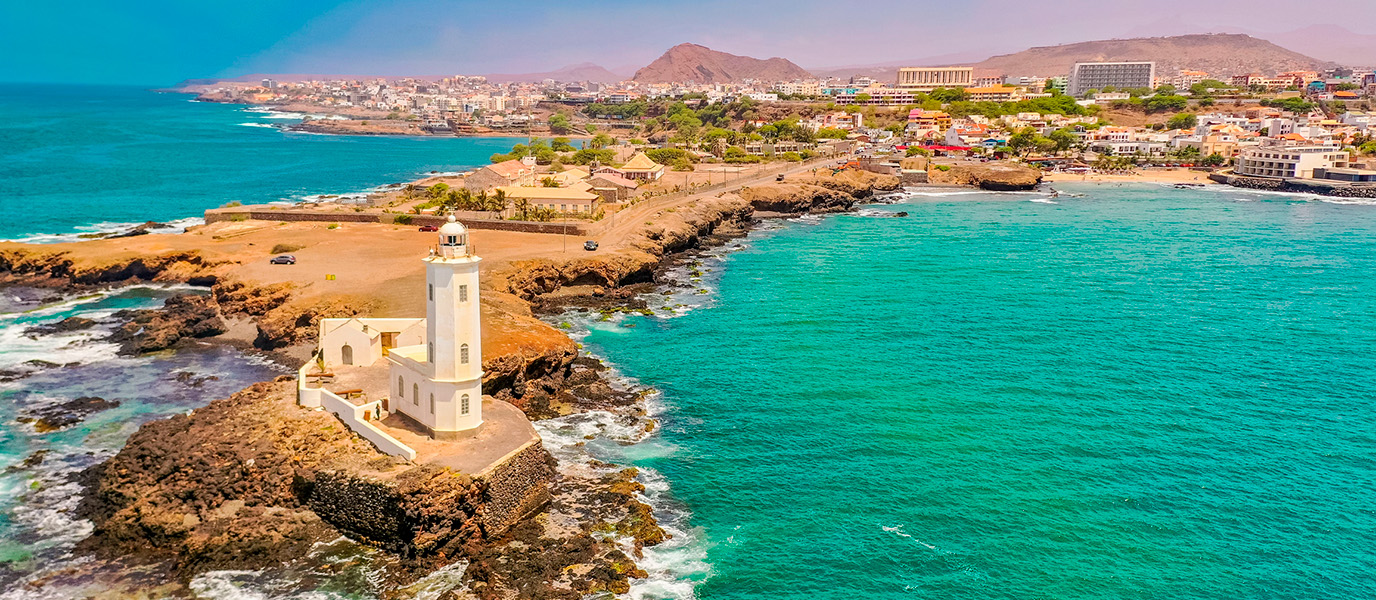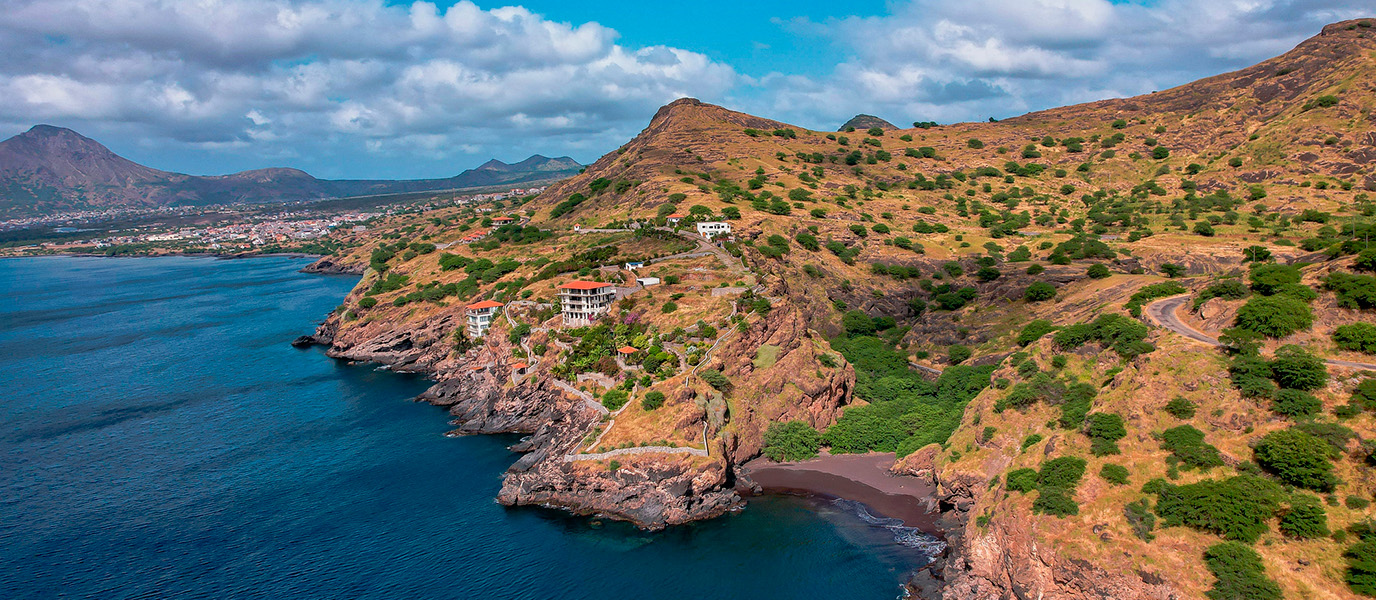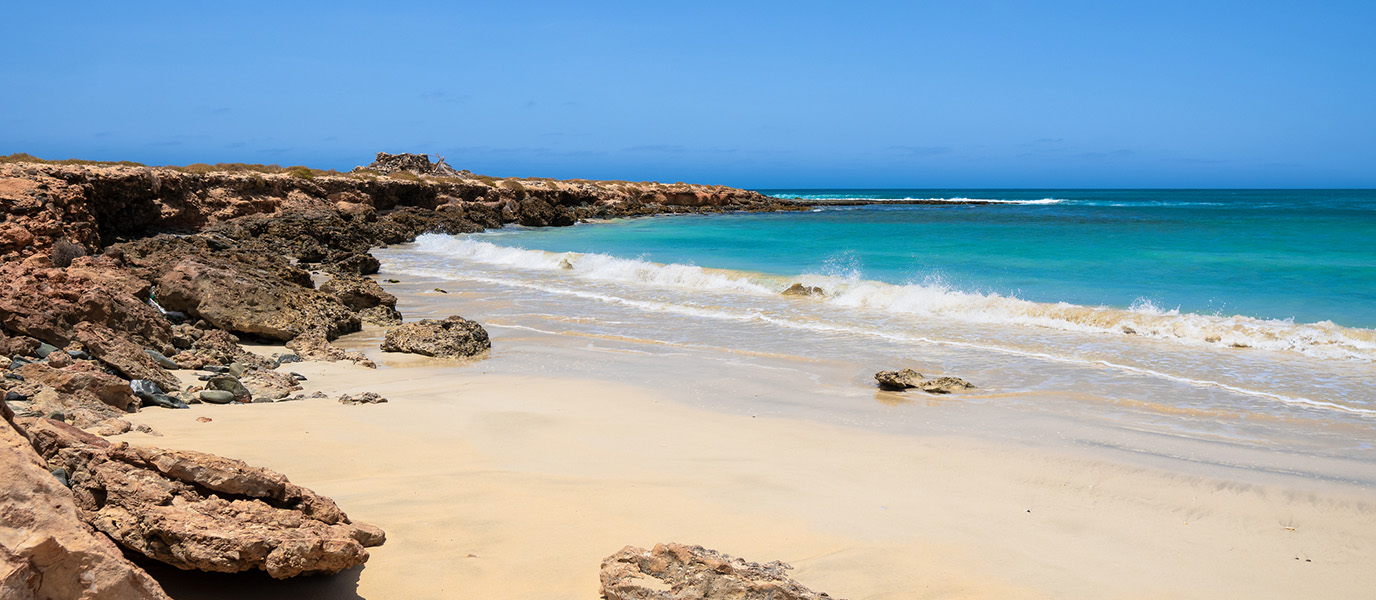Praia, the capital of Cape Verde, is not only the largest city in the country but also the cultural and political heart and soul of the archipelago. Located on the island of Santiago, it is the main starting point for many travellers who arrive in these volcanic lands. At first glance, Praia may seem like just another seaside town but, as you explore its streets and people, you will find a fascinating blend of colonial history, African traditions and the unique essence of island life. The city offers a wealth of experience for curious visitors: from the bustling Sucupira Market to the old quarter of Plateau, with its beautiful Portuguese colonial architecture. Praia is not just a stopover destination, it is a gateway to Cape Verdean authenticity, where pristine beaches, exotic cuisine and the ‘morabeza’, the local word for the hospitality and kindness of its people, invite you to stay a little longer.
History of Cape Verde’s capital: from the dark days of colonisation to a vibrant present with a promising future
Praia’s history is deeply linked to the island of Santiago and the Portuguese colonisation of West Africa. Founded in the 17th century as a small trading port, Praia (‘beach’ in Portuguese) established itself in the 18th century as a key enclave on the Atlantic trade routes, where products such as sugar, cotton and slaves were traded. The city’s strategic location made Cape Verde a stopping point for ships sailing to America and Europe.
During the colonial period, Praia was the administrative centre of the Portuguese colony, and its architectural legacy is a reminder of those times. Plateau’s old quarter, with its colonial-style buildings and cobbled squares, reflects that history of power and commerce. Over the centuries, Praia has grown and evolved, but it remains the administrative and cultural heart of Cape Verde. In 1975, with the independence of Cape Verde, the city assumed its role as the capital of the new state, consolidating its position as the centre of political and economic decision-making. Since then, the city has grown exponentially and somewhat chaotically, although it has no more than 160,000 inhabitants.

Nowadays, Praia combines its rich historical heritage with a vibrant contemporary scene. Old colonial buildings co-exist with modern government buildings, and its historic squares and beaches host cultural events and festivals such as the annual Gamboa Festival in May. Without losing its roots, Praia looks to the future with renewed energy, attracting increasingly more visitors seeking to explore its fascinating blend of past and present.
Things to see in Praia: immerse yourself in the Cape Verdean spirit
Old Quarter: the Plateau, streets full of colonial history overlooking the Atlantic Ocean
The historic core of Praia, recognised by UNESCO as a World Heritage Site, is located on the Plateau, an elevated area overlooking the town and the bay that is home to some of its most iconic buildings. The Palace of Justice and the Presidential Palace, both of Portuguese colonial architecture, are musts. From its squares, such as the lively Alexandre Albuquerque Square, named after the Portuguese colonial governor in 1876, you can stroll along cobbled streets that evoke the colonial era and offer a relaxed and picturesque atmosphere, with their charming, brightly painted houses.
Alexandre Albuquerque Square has some interesting buildings such as the Church of Our Lady of Grace, a neoclassical building dating from the 19th century although the original parish church dates back 400 years, and the Old Town Hall, a Portuguese colonial building with ochre tones. Behind the square is the 19th century Presidential Palace, once the residence of the Portuguese governor and now of the President of the Republic of Cape Verde. There, next to a viewpoint with a beautiful view of the Gamboa beach bay and Santa Maria Islet, where there was once a leper colony, you will see the monument to Diogo Gomes, a Portuguese navigator who discovered the island of Santiago in 1460.

Praia Market, a feast of colours and aromas that defines the local essence
One of the most vibrant places in Praia is its Municipal Market, where travellers can delve into the daily life of the city. The stalls are brimming with fresh produce such as tropical fruits, freshly caught fish and local spices that fill the air with intense aromas. The market is also the ideal place to buy typical Cape Verdean handicrafts such as wicker baskets, wood carvings and colourful textiles, and take a piece of the local culture home with you.
For an even more authentic and colourful experience, a visit to Sucupira Market, further away from the centre, is recommended, where almost anything imaginable is for sale, including live barnyard animals. It is the largest market in the capital and on the island of Santiago. It is always best to go early in the morning, when the traders fill their stalls with fresh produce and activity is at its peak.
Dona Maria Pia Lighthouse, the guardian of the Atlantic coast since the 19th century
The Dona Maria Pia Lighthouse, two kilometres south of the city, is one of Praia’s most iconic landmarks. Situated on a small peninsula jutting into the Atlantic Ocean, this beautiful white lighthouse, which dates back to 1881 and was named after the then Queen of Portugal, provides spectacular views of the sea horizon and the city.
Although you cannot go inside the lighthouse, its imposing structure and location make it an excellent place to take photographs and enjoy the sea breeze. The area around the lighthouse is ideal for strolling and relaxing, especially at dusk, when the sun sets behind the horizon creating a magical atmosphere.
Museums: a closer look at Cape Verde’s complex history
Praia has several museums that will let you immerse yourself in the history and culture of Cape Verde. One of the highlights is the Ethnographic Museum, where you can see exhibitions on the colonial history of the archipelago plus Cape Verdean traditions and customs. The museum also sheds light on the African and European influences that have shaped the country’s identity.
Another feature is the Archaeology Museum, which displays prehistoric and colonial artefacts found in the region, highlighting Cape Verde’s strategic importance on the Atlantic trade routes. There are also exhibitions focusing on slavery and colonisation, which will help you understand the legacy of those eras on contemporary Cape Verdean culture.
For those interested in Cape Verde’s recent history, a visit to the Amílcar Cabral Museum, created in honour of this independence leader and national hero, is worthwhile.
Beaches: go for a quiet dip without leaving Praia
Praia also offers a respite from the urban hustle and bustle on its nearby beaches. Gamboa beach, located just minutes from the centre, is one of the most popular with locals and tourists alike. Its calm waters and golden sands make it an ideal place to relax. During May, the beach becomes the main stage for the Gamboa Festival, one of the main music events in the country, where local and international artists perform in a festive atmosphere.
Another excellent spot is Prainha beach, a small cove near the Dona Maria Pia Lighthouse, which is perfect for those looking for a quieter, more secluded area. Its crystal clear waters make it ideal for swimming or simply enjoying a day in the sun.

Where to eat in Praia: Creole dishes and fresh seafood
Praia’s cuisine reflects the fusion of cultures that characterises Cape Verde, with African, Portuguese and Brazilian influences. One of the most traditional meals is Cachupa, a stew of corn, beans and meat or fish, considered the national dish. Travellers must try it, whether in its simplest version or in its more elaborate variations.
Praia is also famous for its fresh fish and seafood, which feature heavily on the menus of local restaurants. Places such as Quintal da Música provide an excellent combination of traditional Cape Verdean food and live music, making dinner a complete cultural experience. Other highlights include Restaurante O Poeta and Kebra Cabana, both located near the coast, where seafood is the star.
For those with a sweet tooth, ‘doce de papaya’ is a typical papaya dessert not to be missed. Remember to accompany your meal with Fogo Island wine which is famous for its volcanic flavour or the local grogue rum made from sugar cane.





















































































